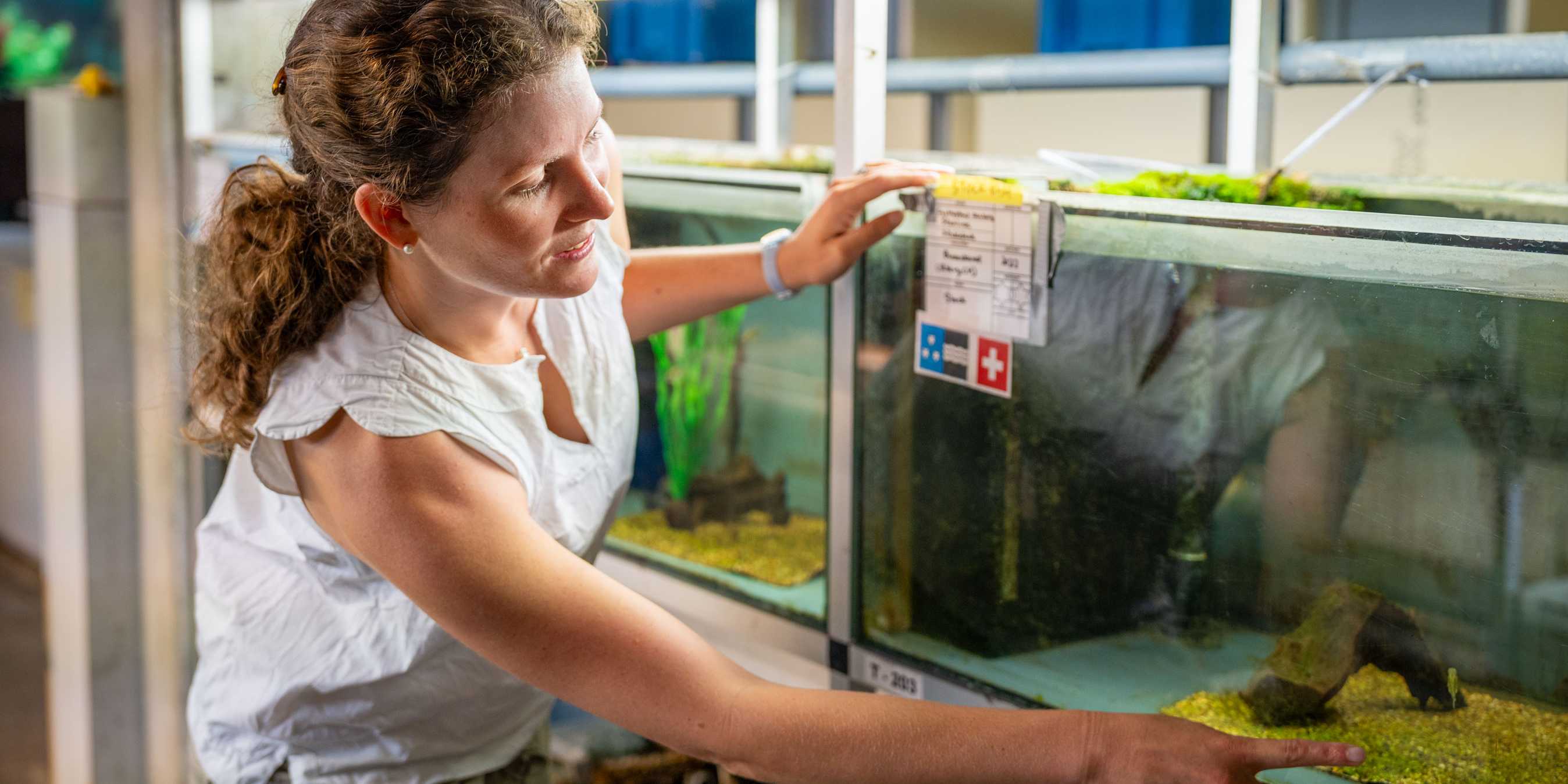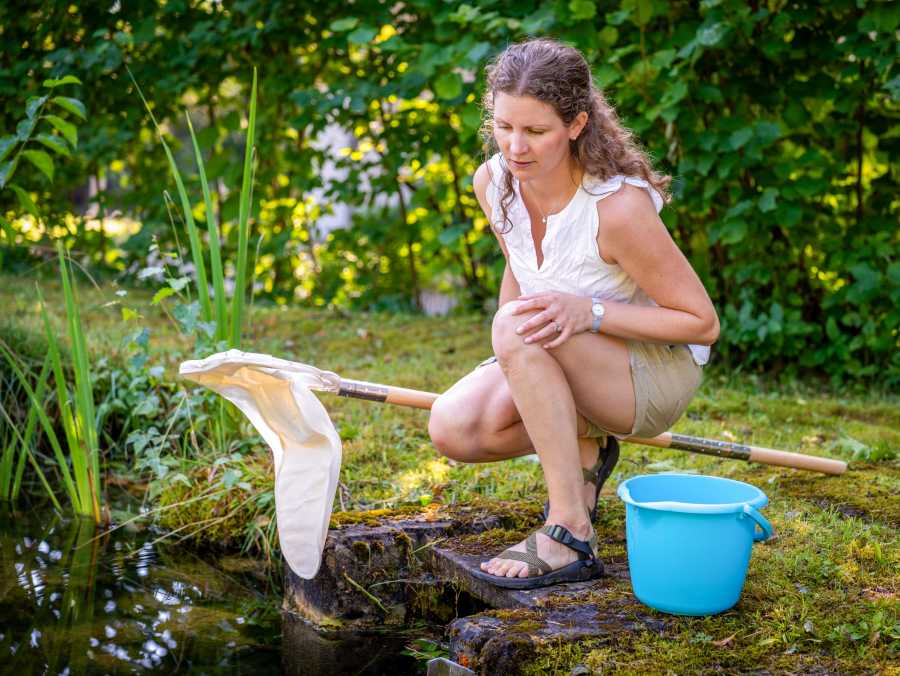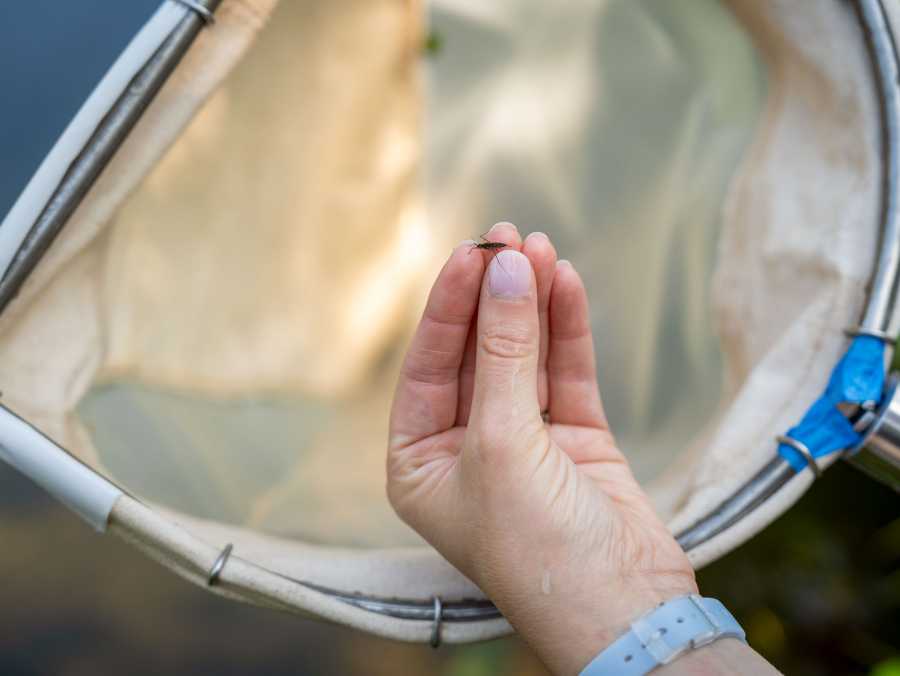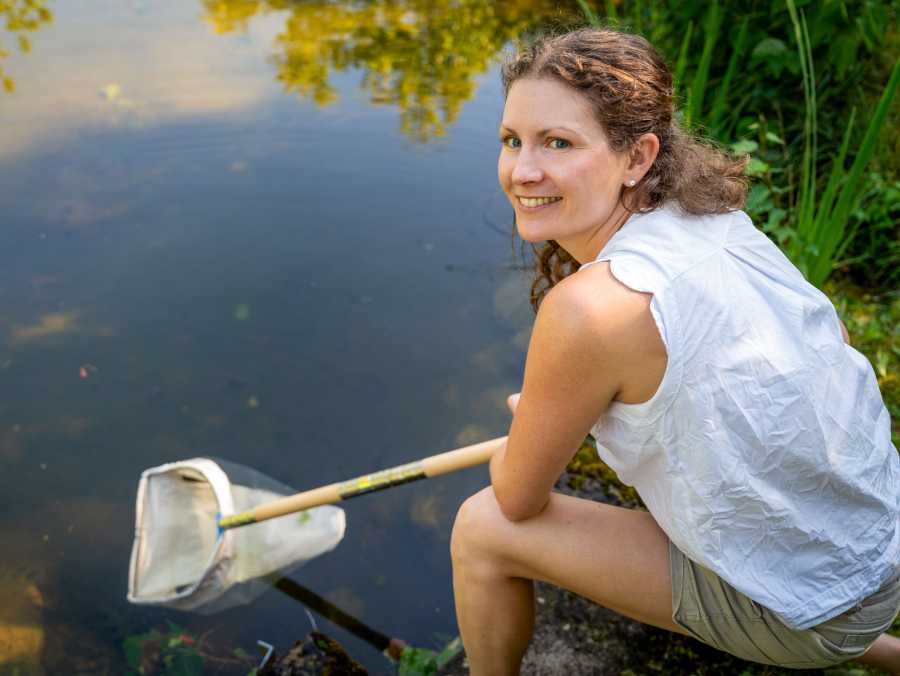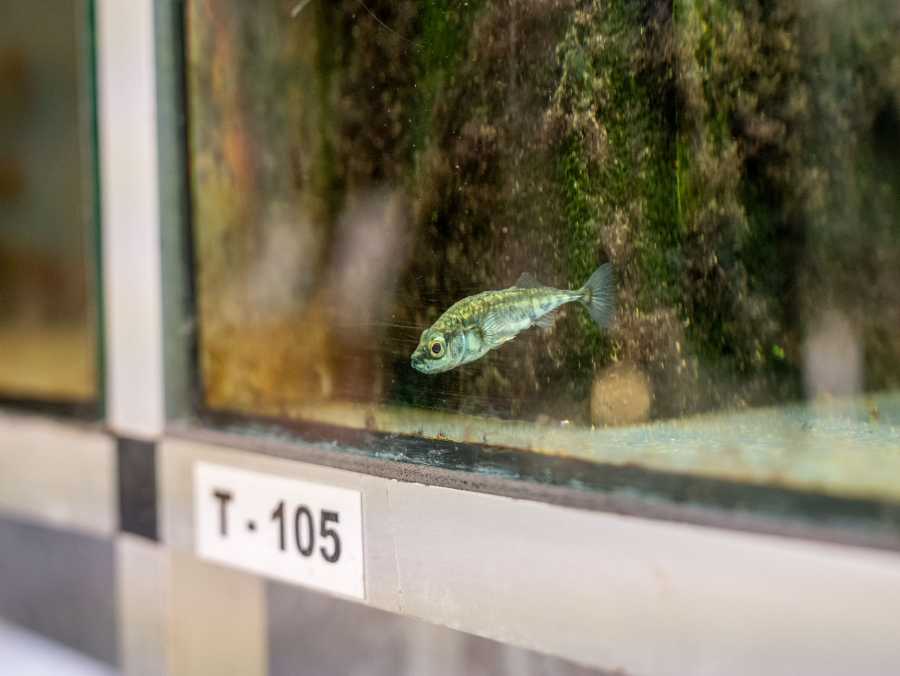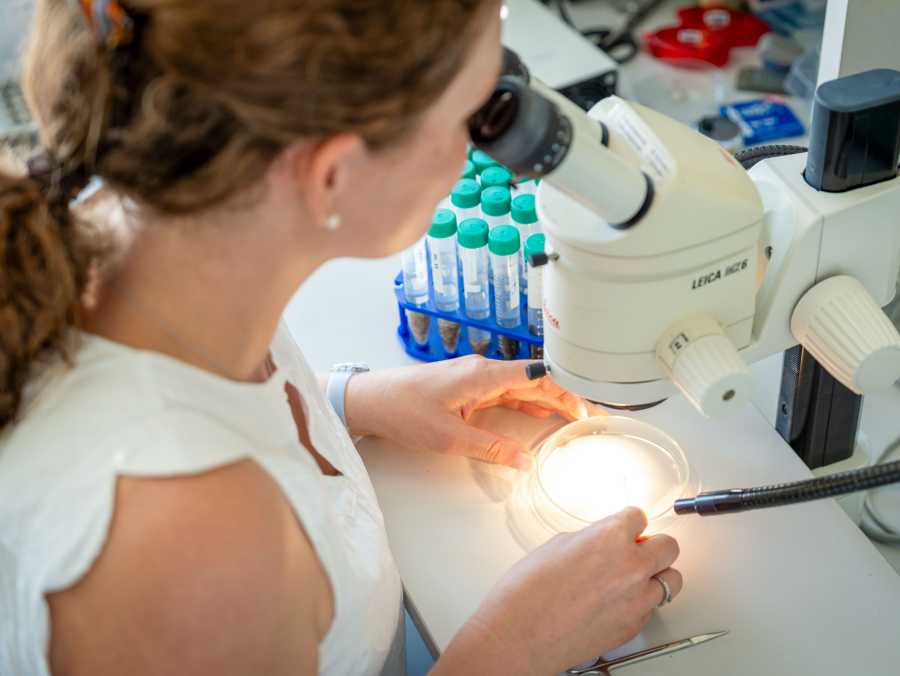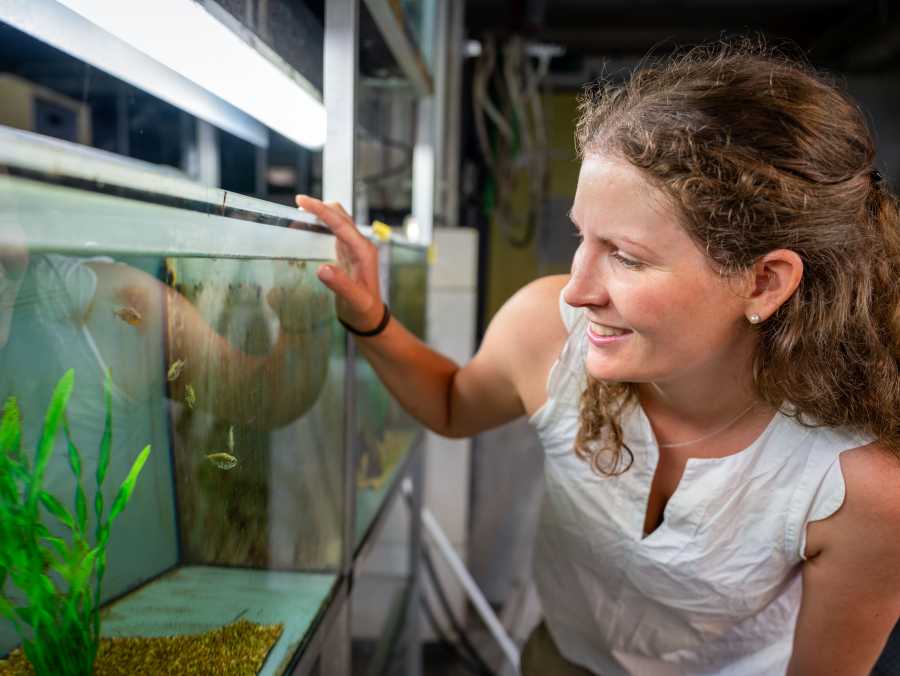For those who don’t know you: Who is Lily Twining?
I grew up in the USA, in the state of New York. As a child, I spent a lot of time outside and loved to go into the woods or mud to collect animals. Even then, I was interested in "who ate whom" questions. Later, as an undergraduate, I had the opportunity to participate in field and laboratory research projects and I really enjoyed doing this in a more scientific way (laughs). After completing my Master's degree at Yale University, I went on to do my PhD at Cornell University, where I met my husband, who is also an ecologist. We were then awarded Alexander von Humboldt Postdoctoral Fellowships, and moved to Germany, where I worked at the Max Planck Institute in Radolfzell and at the University of Konstanz. In 2021, I came to Eawag with a Marie Curie fellowship to continue my research.
What is your research area?
As an ecophysiologist, I study how animals adapt to their food environment, particularly in the face of global environmental change. Much of my work focuses on aquatic insects, which are an important source of omega-3 polyunsaturated fatty acids for terrestrial animals such as riparian birds. In particular, I study how omega-3 polyunsaturated fatty acids (n-3 PUFAs) move through food webs and are modified by consumers. While aquatic primary producers are often rich in n-3 long chain (LC) PUFAs, these compounds are extremely scarce at the base of terrestrial ecosystems, making aquatic resources such as water or fish extremely valuable as sources of these nutrients for terrestrial animals (including us humans).
What is your plan at ETH?
I am excited to be starting my own group here at Eawag and as part of D-USYS. Together we want to deepen our understanding of how processes such as climate and land-use change alter the quality, quantity and phenology of resources, especially aquatic and terrestrial insects. Climate change can alter the quantity, quality and timing of available food. This can lead to a mismatch between when animals need food and when it is available. For example, we see that aquatic insects are advancing their phenology (i.e. seasonal timing) with climate change, but their predators, such as riparian birds, are not keeping pace with these seasonal advances. In addition, even when food is available, animals may experience nutrient deficiencies if the nutritional value of their resources changes.
This is part of what we want to investigate, taking advantage of the different altitudes we have here in Switzerland, from Lake Lucerne to the alpine regions up in the mountains. We will be doing field sampling by setting up emergence traps in streams, as well as laboratory experiments in which we plan to rear mayflies from different altitudes at different temperatures, mimicking local stream conditions. Our aim is to determine whether our field observations of phenology and food quality are largely a result of environmental conditions, or whether they reflect local adaptation of these traits within populations. Ultimately, we hope to help predict the future of these important aquatic-terrestrial fluxes as climate continues to warm. I look forward to continued collaboration with Eawag, WSL and ETH Zurich!
